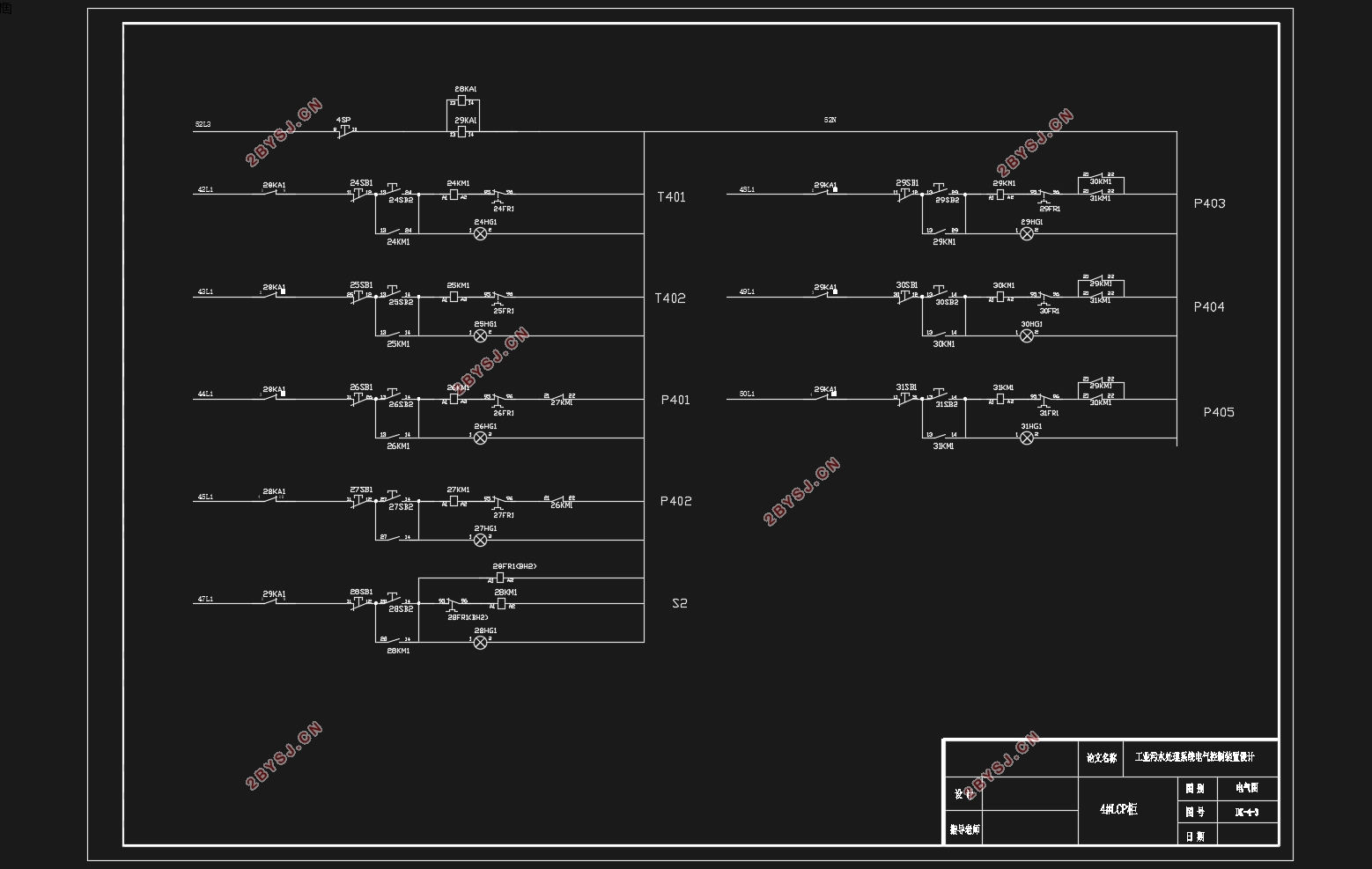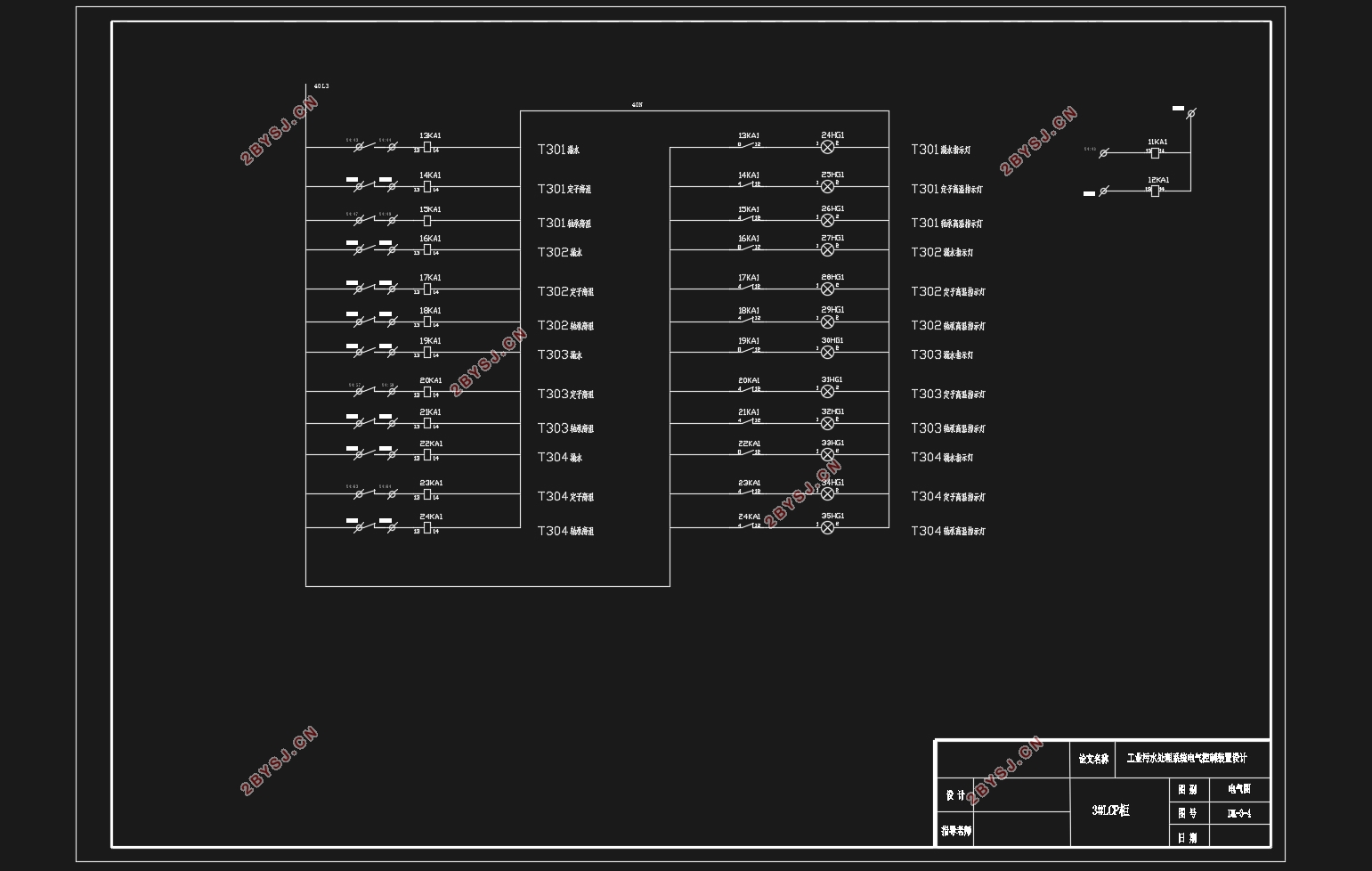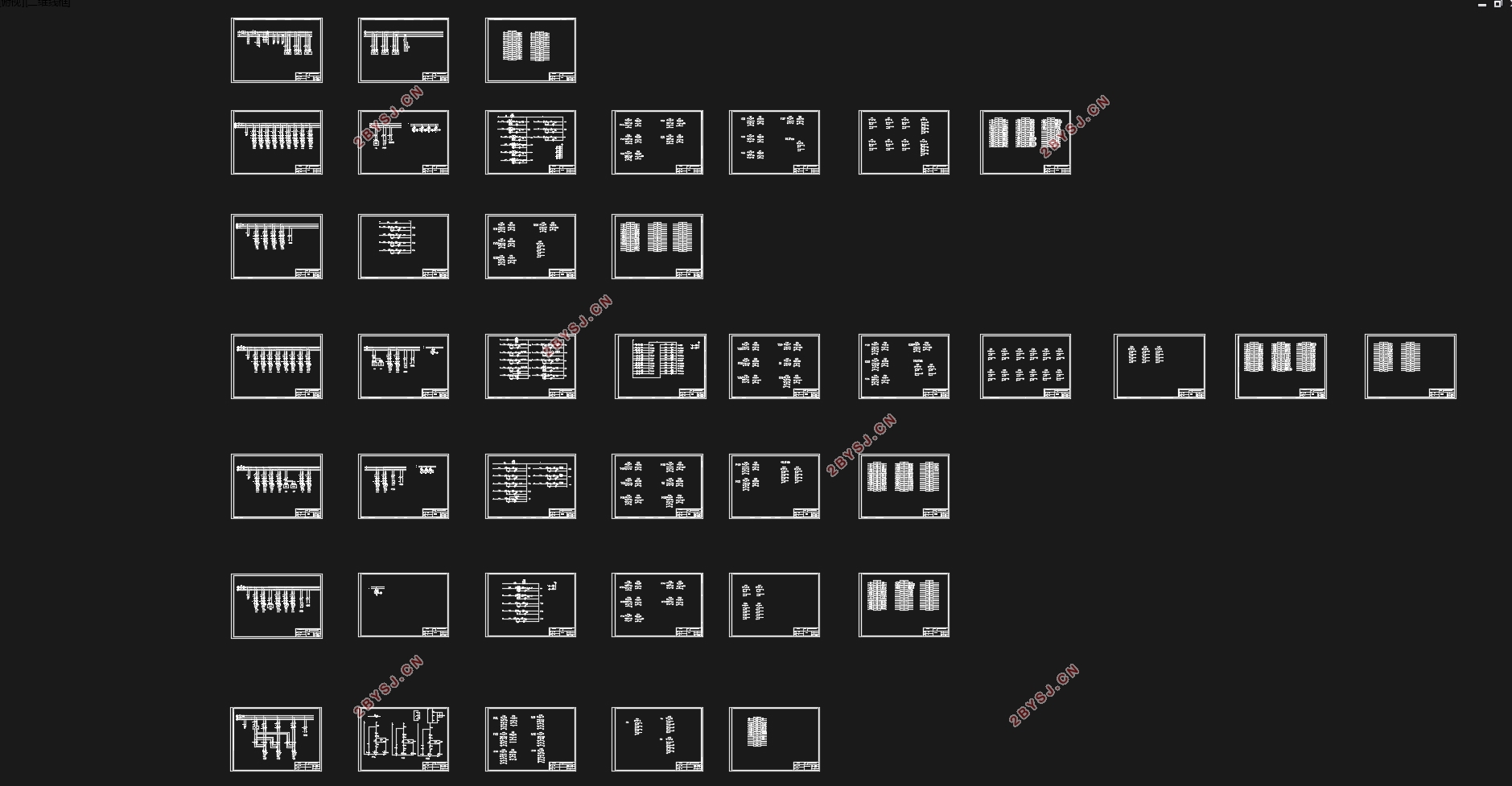工业污水处理系统电气控制装置设计(含CAD图)
无需注册登录,支付后按照提示操作即可获取该资料.
工业污水处理系统电气控制装置设计(含CAD图)(任务书,开题报告,论文11000字,CAD图40张)
摘 要
伴随的我国经济的迅猛发展以及人口的骤增,对于水的需求量日益加大,造成全国水资源短缺。同时工业工厂大量肆意排放废水,使水质恶化,水污染问题严峻。本文介绍了有机污水处理具体实例。系统主要采取活性污泥处理法的污水处理工艺和机械浓缩的污泥处理工艺对有机废水进行处理。电气控制系统通过人工手动控制和智能仪表控制相结合的方式,完成对污水处理的控制,其中一些电机运用先进的电机综合保护器来进行保护,功率较大的风机采用软启动技术。
关键词: 智能仪表 电机综合保护器 软启动技术
The Electrical Control Device Design of Industrial Sewage Treatment System
Abstract
Along with the rapid economic development as well as population increase, the demand for water is growing, resulting in a shortage of water resources in our country. At the same time, industrial plants are wanton waste water in great quantities, make water quality deterioration, serious water pollution problems. This paper introduces the concrete instance industrial waste water treatment. System mainly uses the Activated Sludge Treatment of sewage treatment process and mechanical concentrated sludge treatment process to process organic sewage. Electric control system can complete control of the sewage treatment process through a combination of manual control and Intelligent Instruments control. Some of the motor using advanced Integrated Motor Protector for protection and the large power fan using Soft Start Technology.
Key words: Intelligent Instrument; Integrated Motor Protector; Soft Start Technology



目 录
摘要 I
Abstract II
第一章 绪论 1
1.1 课题研究的背景 1
1.2 国内外污水处理发展概况 1
1.3 课题的主要研究内容 2
1.4 课题研究的目的和意义 2
第二章 工业污水的性质和处理方法 3
2.1 工业污水一些常见的性质 3
2.2 工业污水处理的等级分类和基本方法 3
第三章 有机污水处理系统工艺介绍 4
3.1 系统中污水处理工艺设计 4
3.1.1 化学处理(酸碱中和法) 4
3.1.2 生物处理(厌氧—缺氧—好氧处理法) 4
3.2 系统中污泥处理工艺设计 6
3.3 有机污水处理系统工艺流程 7
3.4 污水处理池内工艺设备选型 8
第四章 有机污水处理系统的电气控制装置设计 13
4.1 电气控制系统简介 13
4.2 有机污水处理电气控制装置简介 13
4.2.1 低压断路器 13
4.2.2 接触器 14
4.2.3 热继电器 14
4.2.4 电机综合保护器JES 15
4.2.5 中间继电器 15
4.2.6 浪涌抑制器 15
4.2.7 软启动器 16
4.3 有机污水处理系统电气装置主电路设计 16
4.3.1 总配电系统主电路 16
4.3.2 各个就地开关柜的主电路 17
4.3.3 风机软启动主电路图 17
4.4 有机污水处理系统电气装置控制电路设计 18
4.4.1 自锁控制 18
4.4.2 互锁控制 19
4.4.3 急停控制电路 20
4.4.4 超声波液位计联锁控制 20
4.4.5 电机综合保护器控制 21
4.4.6 软启动控制 22
4.5 电气控制装置结构设计 23
第五章 结论与展望 24
5.1 结论 24
5.2 展望 24
参考文献 25
